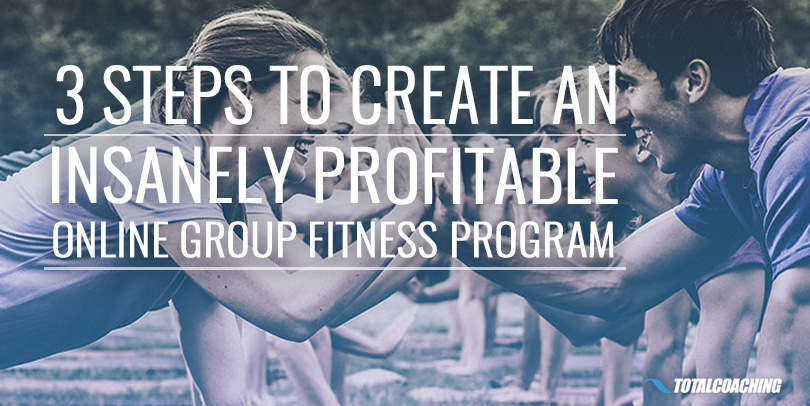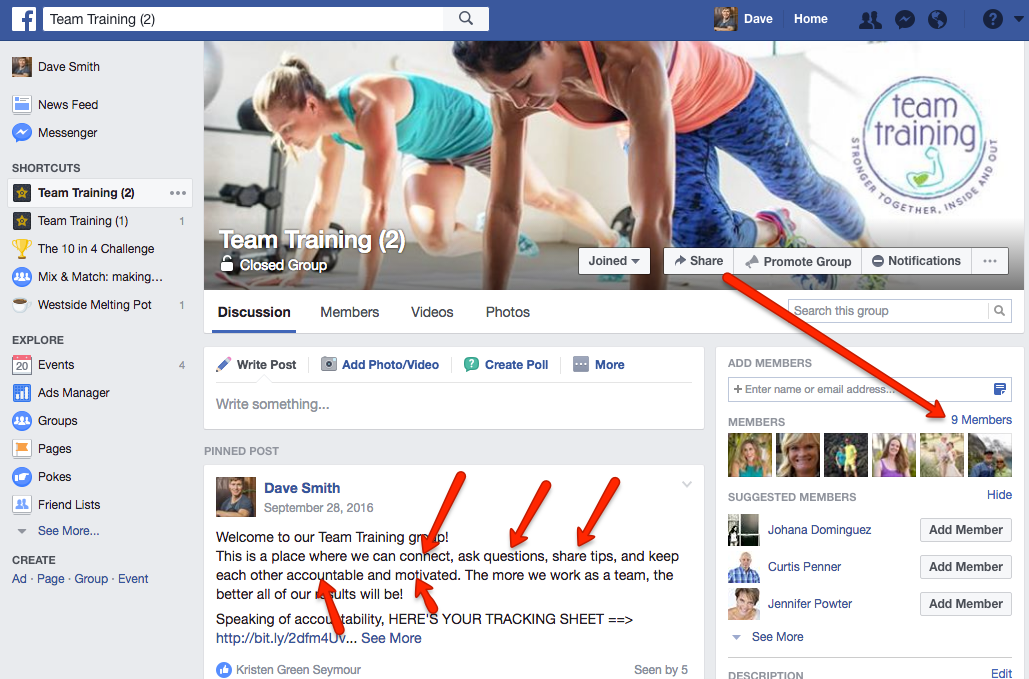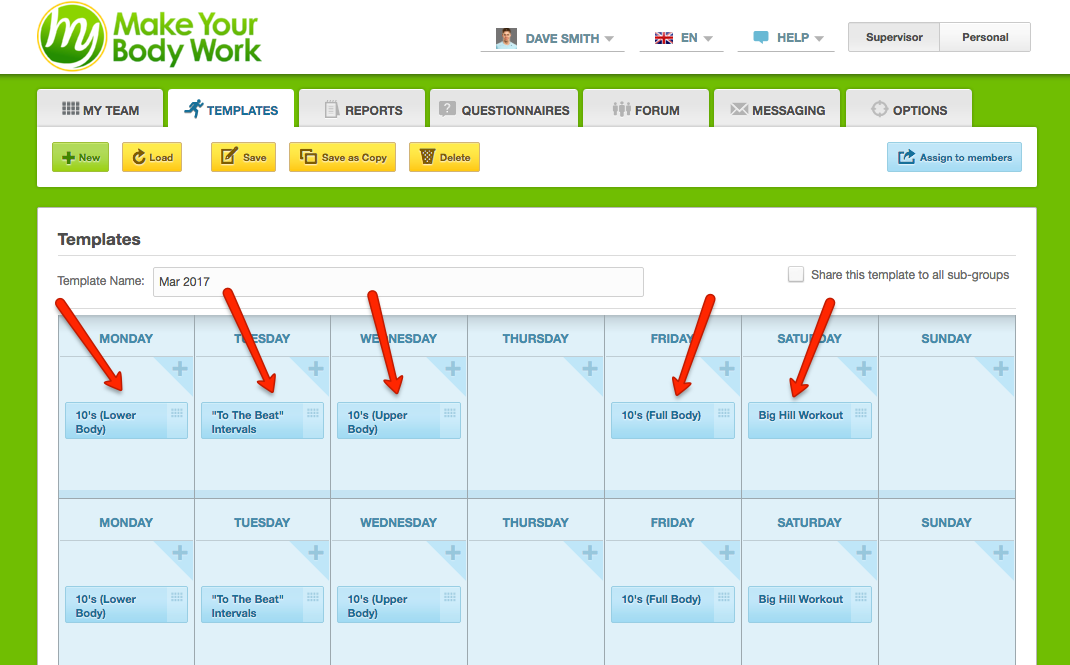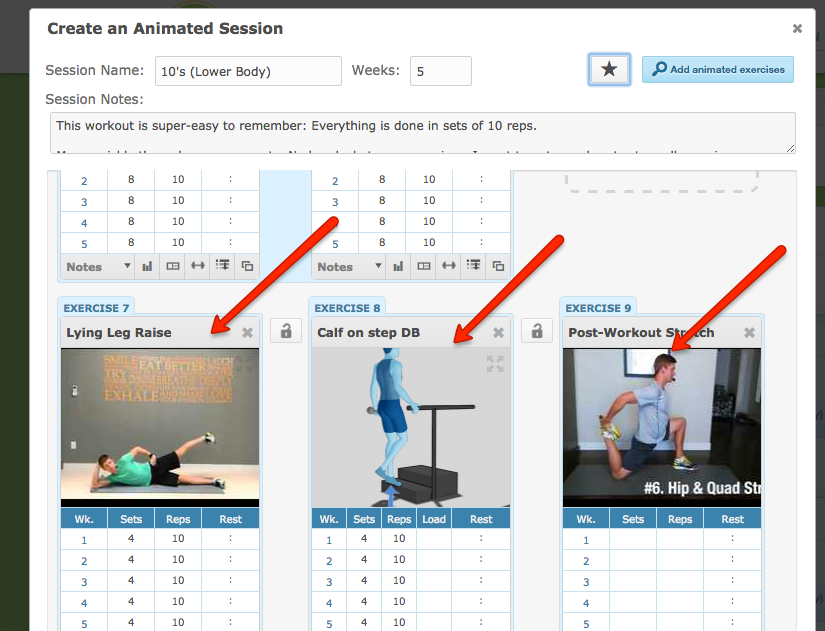If you've been a personal trainer for any length of time, you already know that the real money is found in group fitness. Let's do some math to prove it...

When I was training clients face-to-face, I continually increased my rates until I was training very elite clients who could afford to spend top-dollar on the best training service. That worked out to between $100-120 per session.
At most, I could comfortably handle seeing 5 clients per day for 5 days per week. That works out to $2500 per week in revenue. Not bad, right?
But, when teaching group fitness classes, I charged $20 per class and kept my classes small (only 8 people per class). That's $160 per hour - Cha-ching!
Instead of training clients one-on-one, I could run 3 classes per day for 5 days per week and would earn $2400 per week in revenue. Yes, that's $100 less than I'd earn as a one-on-one trainer, but I'm also be working 40% less. That's an easy decision if you ask me!
Online Group Fitness Training
The exact same principle applies to online training:
If you want to provide the best service, at the best price, while also making the most money, you have to work with clients in group-training formats.
Before we dive into how to do this, it's important to remember what the vast majority of your clients really need...
They need motivation and accountability to help them make healthy lifestyle choices that they will not make on their own. Your job is to facilitate healthy habit formation. You are not an exercise programmer - you are a coach. And, the most effective form of coaching most often occurs when people are working together in teams.
3 Step to Building Your Online Group Fitness Business
Again, I want to emphasize that the workouts you provide to your clients are secondary. Getting them to develop a consistent habit of exercise is your goal. Here's how you can do it while building a very profitable business at the same time:
1. Build a Niche-Based Community
The more your clients can support one another the better. Not only will this save you time, but it will also empower your clients: they don't need you to hold their hand through every workout, or to answer every question they might have.
Instead, build an online community based around each niche that you work with. For example, one of my niches is 40-60-year-old women who are already gym-goers. They know how to exercise but want to spice up their workouts and want to be pushed a little harder.
As you can see below, I have created Facebook groups for my niches, each one having 5-10 members. This small group creates a sense of belonging, teamwork, and camaraderie.

Be clear as to what the explications are for your niche communities.
Notice the purpose of this group as stated in the opening post: the women in this group know right from the get-go where their support is coming from - it comes from this group, not from emailing me every day with questions!
I don't mean to sound uncaring for my clients. I love them! But, I am doing them a disservice if I train them to rely on me as their sole motivator and source of information. Being part of a niche community offers so much more value.
Don’t be afraid to experiment until you find the right niche for your business and community. https://t.co/h2SODagSFp pic.twitter.com/JROdtBCc1o
— Melonie Dodaro (@MelonieDodaro) March 19, 2017
2. Create an Accountability Process
Once you have your niche groups set up in Facebook (or wherever else you decide to host them), it's time to create some accountability structure. You need to tell members of your community how they are going to keep one another accountable.
I use Total Coaching as my online training platform and it does offer some great features to help you, as the coach, keep tabs on your clients' progress. But, I like to make their progress public so that they can celebrate their wins together, and encourage each other when things fall off track.

Full transparency creates accountability.
Above is one of my Google spreadsheets. I create one for each of my niche communities and require that members keep track of their exercise here. Why?
Is Jennifer going to want to be the only lady in the group who didn't do her exercise for the week? Nope. You can use positive peer pressure to help your clients prioritize their exercise. They will want to stay caught up with their group.
You can set this up any way you like. Just be sure that there is complete visibility so that every member of your niche community can check in with the progress of every other member.
It's just like a boot camp class. If Jennifer doesn't show up for 2 weeks in a row, the other ladies in the group will notice. Your job is to create that same accountability and transparency online.
3. Deliver Mass-Customized Fitness Programs
Henry Ford is famous for telling his employees that their customers can order any colour of Model-T car they want... as long as it's black.
This is the quintessential example of mass production: make one thing very well and force your customers to take it and like it.
When it comes to your online group fitness programs, mass production isn't likely to offer high value (and safety) to all of your clients. Everyone is a bit different in their strengths, weaknesses, and experiences, so it's not fair to ask them to do the exact same workouts.
On the other hand, creating individualized workouts for each online client doesn't make sense either. They're paying for group training, so they cannot expect to receive completely customized service.
The solution is called Mass Customization.
Let me show you how this can work with an example from one of my own online group fitness programs:

Customize workouts by niche, then mass produce them within that niche.
In the image above you will see a template for "Mar 2017" in my Total Coaching account. I create one of these templates each month for each of my niche training groups. This one is again for women, 40-60 years old, who have been exercising in the gym for at least 1 year.
If I were practicing Mass Production with my fitness plans, I would create a single workout for all of my clients. As I mentioned above, I don't think this offers good value, nor is it a safe way to train.
Instead, I use Mass Customization by creating a customized set of monthly workouts for my clients based on their tightly chosen niche. My women exercisers who are 40-60 years old are already working together in a community, and their exercise abilities are quite similar, so it makes sense that they do the same workouts.
Approach mass customization just as you would with face-to-face group exercise. You wouldn't create the same bootcamp class for 20-year-old male athletes as you would 50-year-old menopausal women, would you?
But, you also know that you don't need to create a unique workout for each member of your class. Say it's a mommy bootcamp with moms who just gave birth within the last year. They will all be at similar fitness levels, so you can start them with the same program and make modifications as needed.

Each niche has their Mass Customized workout plan; they can discuss it and ask you questions in their online community.
Do the same online. Create one program for each niche group. Then, help your clients make personal modifications via your online community.
Concluding Thoughts
There's a reason why group fitness is so popular. People like working with a team and get better results than they would working on their own. Use this 3-step process to bring the benefits on group training into your online fitness business and enjoy improved profitability in the process.




